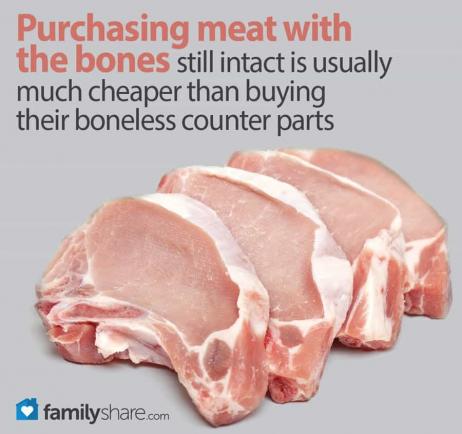
It is no surprise that shopping for meat can put a huge dent into your monthly budget. Let's face it; the cost of meat seems to be rising every month. We can certainly blame the price of gas and the increased demand in food, which will never cease.
So, how do you save money on purchasing meat? Of course, meatless meals can help keep the budget in check, but don't feel you have to substitute at every meal. Here are some tips.
Think bone-in when shopping for meat
Purchasing meat with the bones still intact is usually much cheaper than buying their boneless counter parts. The extra work involved in removing the bones at the store is shown in the price. Plus, keeping those bones makes for some really good homemade stock.
Watch for sales and shop with coupons
Many stores and even big name meat brands supply coupons. To increase your savings, match a manufacturer coupon with a current sales ad. Significant savings means making more room in the freezer for those stock-up prices. Try purchasing only meat that is on sale.
Most grocery stores offer significant price reductions on meat that have a close sell by date
Savings can be as much as 65% or more. Don't be afraid to ask your butcher for marked down meats. Shopping earlier in the day for marked down meat will give you a wider selection then later in the afternoon (after all you are not the only one searching for those same deals). If you plan on purchasing meat that has been marked down and you don't plan on using it right away, I would recommend opening the package, checking it out and repackaging it for the freezer.
B-I-G-G-E-R is better
Bulk packaging or family-sized packages of meat usually cost less per pound than smaller packages. Buy one big package and divide into the portions you will need for your family and freeze.
Frozen meat (think tubes of ground chicken, turkey, and beef, etc.) can cost much less per pound
They are usually divided onto one-pound frozen packages which can be extremely convenient.
The leaner the meat, the more savings
Yes, leaner meat can cost you more up front, but once cooked you will have more meat on your plate and less fat in the pan. By purchasing less lean meat (80 percent lean ground beef); you are actually paying for more fat that will be cooked away later.
Search for end cuts found at the deli counter
End cuts are reduced priced versions of what is available behind the deli counter. They are literally the end pieces or cuts of sliced meats. Most stores have a specific area just for end cuts.
Seek another source
Find a good local famer that raises and sells his/her own meat. Cut out the middle man, go directly to the source. You may even benefit by getting better quality meat. The only down fall to this method is you will need a large enough space to freeze your savings.

